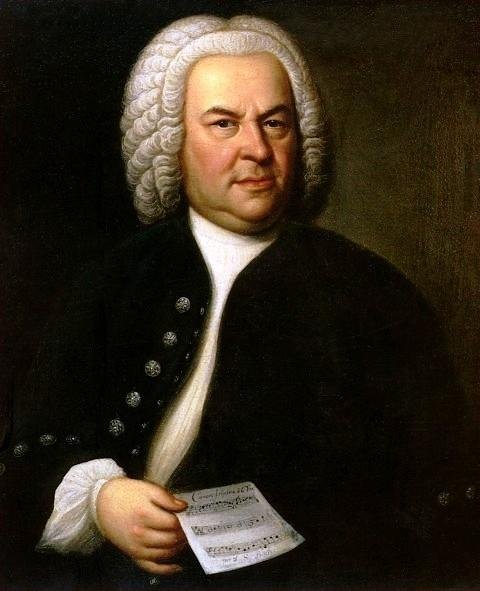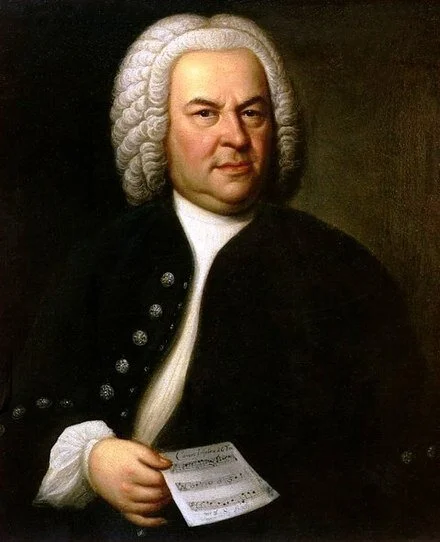These program notes were written by Elise Groves for a concert featuring Brandenburg Concerto No. 5 in D major, Trio Sonata in G major, and Schweigt stille plaudert nicht (“Coffee Cantata”). This concert was presented by The Bach Project in conjunction with Ashmont Hill Chamber Music on March 10, 2024
Is it fate? Chance? Luck? Divine guidance or intervention? Karma? Fortune’s Wheel? What is the best name for that almost magical experience of being in the right place at the right time? What happens when that moment is over? Bach’s Brandenburg Concertos are a case study in chance encounters and what may (or may not) transpire because of them. From 1717 until 1723 Bach was the Kapellmeister for Leopold, Prince of Anhalt-Köthen. Bach’s attention during this time was primarily on secular and instrumental music for the court rather than sacred music for Lutheran services, since the court in Köthen was Calvinist. In 1721 Bach reworked a selection of six instrumental concertos (including the Concerto No. 5 in D major), had them bound, and sent them to Christian Ludwig, Margrave of Brandenburg, thus earning them the name “Brandenburg Concertos”
There are many theories about what led to the submission of the Brandenburg Concertos. In 1721 Prince Leopold married Frederica Henriette of Anhalt-Bernburg. Bach blamed her lack of interest in music for the Prince’s waning support for the musical institution in the Köthen court. At the same time, Köthen also had growing monetary obligations to the Prussian army and it is likely that was the underlying reason for the cuts to Bach’s funding. Bach had previously visited Berlin in 1719 and met the Margrave, who (according to some sources) asked Bach for some compositions. Possibly Bach remembered the Margrave’s interest and thought it could be an excellent time to begin a job search. His first wife, Maria Barbara, had died in 1720 so Bach may also have been looking for a way to start fresh in a new position.
Nothing came of Bach’s submission of the concertos. They weren’t published until 1850, and it is unknown if the Margrave ever had them performed. The Brandenburg court lacked some of the instruments needed for a performance and after two years of waiting for Bach to respond to the request, the Margrave’s interest may have waned. Perhaps that was a good lesson about the importance of timeliness and tailoring an application to the needs of the position. Though Bach is recognized as a great composer now, in his own day he was not part of the top tier of court musician-composers. It is one of the great ironies of Bach’s story that a failed job application has become some of his most famous and well-loved instrumental music.
After receiving no response from Berlin, Bach took a position in Leipzig in 1723. While his first years there were focused on the cantatas, in 1729 he took over the leadership of the Collegium Musicum in addition to his church responsibilities. Many German cities at the time had similar societies made up of university student musicians and led by local professionals. The Leipzig Collegium Musicum gave weekly free performances at Café Zimmermann until Gottfried Zimmermann’s death in 1741. Twelve years of weekly performances gave Bach an opportunity to present earlier compositions such as the Brandenburg Concertos as well as a chance to rework pieces and explore other secular genres.
The Trio Sonata in G major, BWV 1038, has been the subject of significant debate. The source is a set of parts in Bach’s handwriting dating from 1732-1735. It has the same bass line as the Violin Sonata, BWV 1021, and is also a model for the Trio for Violin and Obligato Keyboard, BWV 1022. Some have proposed that BWV 1021 is J.S. Bach’s work but that BWV 1038 and 1022 may have been by one of his sons (perhaps even C.P.E.). Another possibility is that the repeated bass line in BWV 1021 and BWV 1038 was a labor-saving device since these were likely written for highly skilled amateurs or students (such as the members of the Collegium Musicum) rather than professional players. Keeping the bass line from a previous work would have given Bach a chance to explore new possibilities for realization and counterpoint while also saving some compositional time.
Though opera was the one genre Bach neglected, the secular cantata Schweigt stille, plaudert nicht, BWV 211 (“Coffee Cantata”) leaves little doubt about his ability to write for the stage. With exaggerated characters, social commentary, and humorous plot twists, this miniature comic opera was a light-hearted criticism of the coffee culture of Leipzig in the early 1700s, both those who enjoyed it as well as those who were adamantly opposed to it. Bach’s libretto came from Christian Friedrich Henrici (Picander) who contributed texts for many of Bach’s sacred works as well. In this story, the stern father Schlendrian offers bribes and threatens punishments to break coffee’s hold on his daughter Liesgen. She ignores and evades him until he finds the one thing she desires most. In a plot twist that Bach added to Picander’s text she finds a way to have both.
The years in Leipzig were some of the most stable and successful of Bach’s life, and working with the Collegium Musicum at Café Zimmermann gave him the opportunity to do both secular and sacred music. Bach wasn’t the most successful musician of his day. He wasn’t the first (or second) choice for the job in Leipzig. Sometimes he was in the right place at the right time and was able to transform that moment into career success. Other times his applications went unanswered, his employer’s attention moved to other things, he had to navigate family tragedies, and he learned lessons the hard way. He wasn’t the most famous, his music wasn’t the best liked, and he didn’t always get along with his employers (or his performers). Fate, fortune, karma, luck… The realities of life as a working musician were as complicated then as they are now, even for those at the top.



